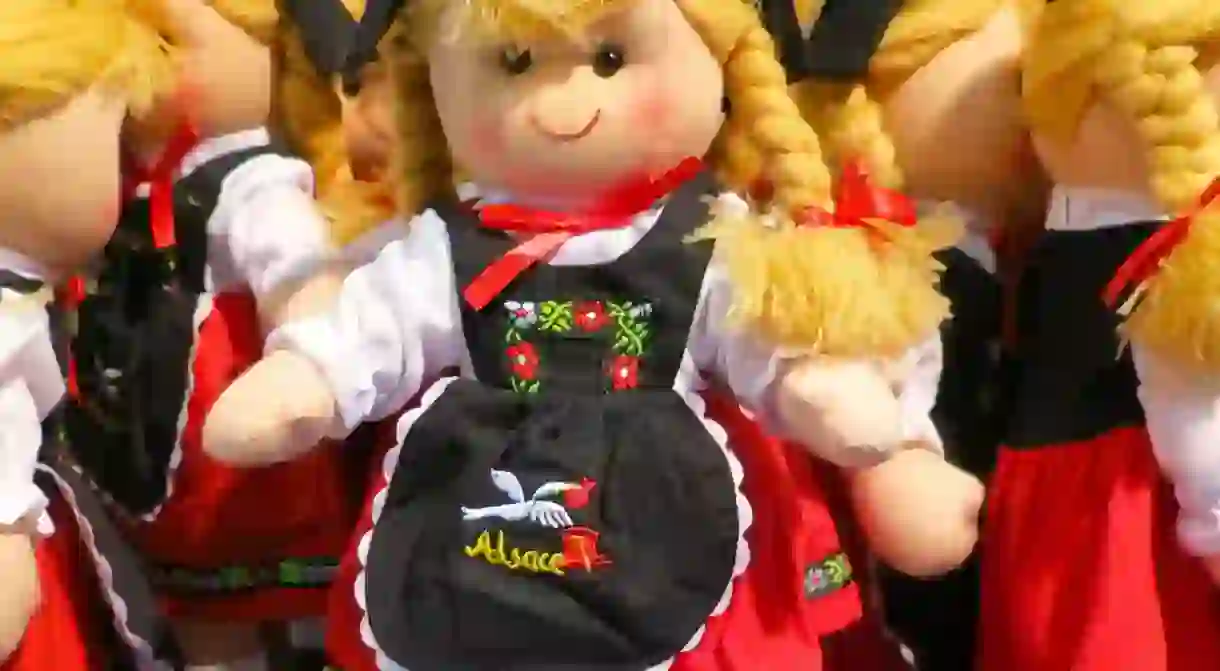10 Traditions Unique To Alsace, France

The colourful blend of German and French cultures, languages, religions and history is reflected in the art and gastronomy of Alsace, and has also given rise to a host of its idiosyncratic traditions.
Extra holidays
Christmas Day is a national holiday all across France, but in Alsace, people get a whole extra day to celebrate. A carryover from the days when Alsace transitioned from German back into French hands, December 26th marks the day of Saint-Étienne and, just as the rest of the country trudges back to work with a hangover, lucky Alsatians get the day off. The same thing happens during the Easter weekend: the Monday after Easter Sunday is a national holiday, but in Alsace they also get Good Friday off, making it into a longer 4-day weekend.
The Stork
The stork is a bird beloved by Alsatians to an almost mythical degree. Once threatened with extinction, the stork population is now thriving and the birds are traditionally thought to bring good luck (and babies, of course). To this day it is considered a good omen for the inhabitants of the home atop which a stork decides to set up their nest.

Family Fair
In the smaller towns and villages, the Messti or the Kilbe is celebrated once a year, either for a day or a whole weekend. The tradition started as a holiday to mark the date when the local church was consecrated. Locals get to wear their eye-catching traditional costumes, enjoy delicious food, and generally have a thoroughly good time typically crowned with a dance. It is mostly a family celebration, with several generations coming together for this special day.

Bonnet
The famous Alsatian bonnet, though it fell out of use after 1945, can still be seen occasionally at folk festivals and ceremonies. It varies widely from village to village and carries its own language reflecting the social status and religion of the wearer.

Church and State
France has a strict separation between Church and State, under the doctrine of laïcité. Alsace and Moselle however, are the only historic regions not to have such a separation. While freedom of religion is a constitutional right, public subsidy of faith-based institutions is permitted and the clergy is on the state’s payroll. Only here is the teaching of religion allowed in public schools, although parents are allowed to opt out of religious classed for their children.
The Hunt
In contrast to the rest of France, in Alsace, the owner of the land is not considered to own the game inhabiting it, and therefore hunters cannot be prevented from accessing privately-owned woods and fields. Hunting rights are sold at auction by means of nine-year licenses.
Christmas Traditions
Christmas Markets
The Christmas markets are the hallmark of winter in Alsace. Over two million visitors from all over the world flock to Christkindelsmärik in Strasbourg, just one of hundreds held around the region. The Capital of Christmas, as Strasbourg is known, owes its title to the fact that the very first Christmas market was held here in 1570. As with most religious festivals in the Middle Ages it was an event which combined the sacred with the mercantile, featuring market stalls selling all sorts of food, goods and crafts that gradually evolved into the magical events that take place every year around the Christmas holidays in Alsace.

The Christmas Tree
The town of Sélestat officially claims the status as the city where the Christmas tree originated. In fact, it was here that the first written mention of the Christmas tree was found, dating from 1521, in a city register. Technically it refers to the right to go and cut trees in the forest on Christmas Eve, but over the centuries its identification as the birthplace of the original Christmas tree was incorporated into Christmas lore.
Père Fouettard
If you’ve been naughty, then maybe best avoid Alsace in the lead-up to Christmas lest you run into le Père Fouettard. The whip-wielding character walks alongside St. Nick on his gift-giving mission, but instead of presents, he dispenses lumps of coal and floggings to any children who have misbehaved.













